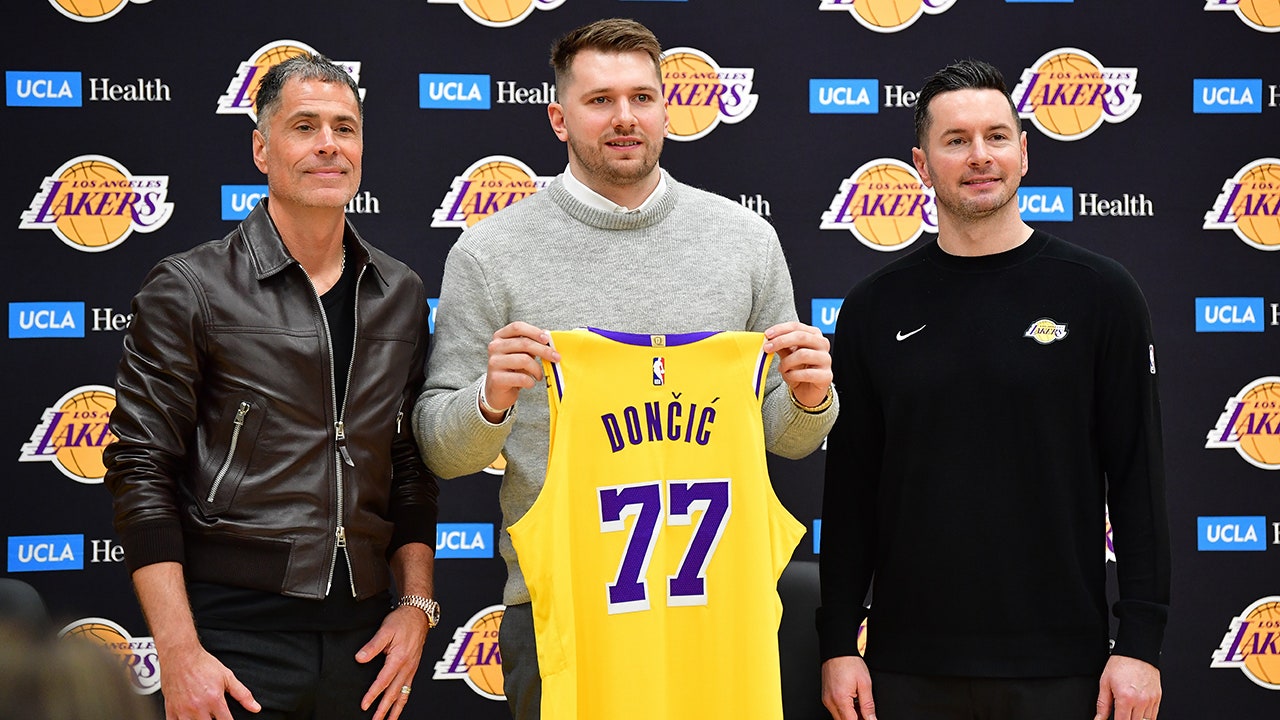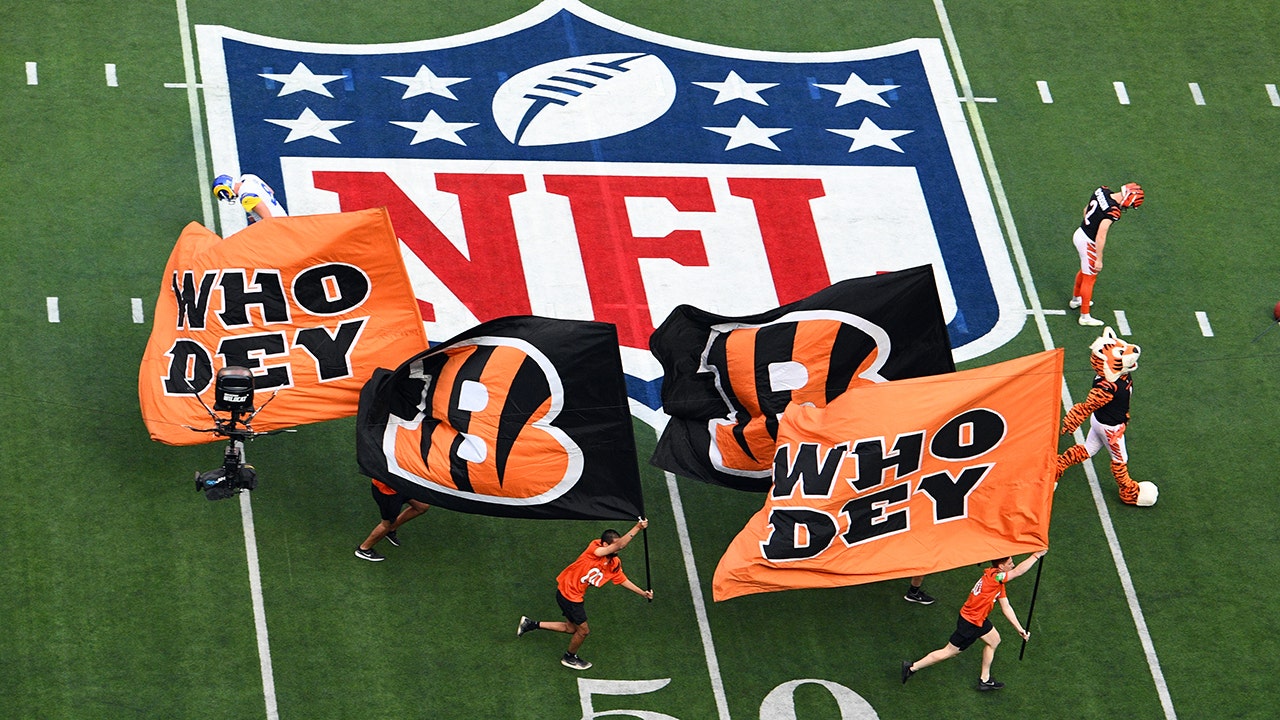For Debbie Jevans, a seat on Centre Court at Wimbledon requires no more than a left turn out of her office, then a right turn past the trophies honoring past champions. A few short steps further, the same steps taken by the competitors on finals day, and Jevans finds herself on hallowed grass.
“Centre Court is such a special place,” said Jevans, the first female chair of the All England Club, by video call last month. “The court is pristine, the flowers look amazing, the overviews of St. Mary’s Church in the background. I feel an enormous sense of pride and thanks to the hundreds of people who have got us to this point.”
Seeing the elegance and lush lawns on opening day at Wimbledon is, for players and fans, like stepping back in time. One of the biggest reasons is because professional play on grass is as elusive as a Wimbledon title itself.
Iga Swiatek has played 23 WTA grass-court singles matches out of almost 400 total in her career. Swiatek, the world No. 1, has not advanced beyond the quarterfinals at Wimbledon.
Jannik Sinner, the newly named world No. 1 in men’s tennis, enters Wimbledon having played just one ATP grass-court tournament this year — which he won over Hubert Hurkacz in Halle, Germany, on June 23 — and only nine in his career. One of those matches was a five-set Wimbledon quarterfinal loss to Novak Djokovic in 2022.
Carlos Alcaraz won 12 straight matches on grass last year, including titles at Queen’s Club and Wimbledon, but was upset in the round of 16 at Queen’s Club about two weeks ago by Jack Draper. At Wimbledon last year, Alcaraz beat Djokovic in five sets. He also won the 2022 U.S. Open on hardcourts. When he won this year’s French Open on clay he became the youngest man to win three majors on three different surfaces.
“Every time I step on a grass court I have to learn how to move better, how to play better,” Alcaraz said after his first-round win at Queen’s Club in June. “So I feel like I’m still learning.”
The grass-court tennis season is precariously short. This year there are only eight ATP tournaments and seven WTA events, spread over a few weeks.
In 2025, with the dissolution of the Hall of Fame Open in Newport, R.I., there will be one less ATP week on grass. Pro tennis has been played on grass at the International Tennis Hall of Fame in Newport virtually every year since the first U.S. National Lawn Tennis Championships, precursor to the U.S. Open, began there in 1881. The Hall of Fame Open is the only ATP grass-court tournament left in the United States.
By comparison, there are 40 hardcourt tournaments out of 70 total on the ATP Tour this year and 22 clay-court tournaments, including the Paris Olympics. The WTA has 56 tour-level events this season, 36 of which are on hardcourts and 13 on clay. The numbers are similar for 2025.
Grass is an inherently tricky surface to maintain and to master. The groundskeepers at Wimbledon spend the majority of the year cultivating and sodding the perfect blades. They even employ the England-based company STRI, which was founded in 1929 to help golf’s St. Andrews in Scotland improve its greens, to make sure that the grass is as playable as it is pristine.
The upkeep of grass courts, which quickly become treacherous during frequent London rain — Frances Tiafoe, Dan Evans and the defending Wimbledon women’s champion Marketa Vondrousova all took nasty falls during a tournament in June, putting their Wimbledon chances in jeopardy — is a challenge, but they also require a different skill set for the players.
When Martina Navratilova won Wimbledon nine times from 1978 to 1990 and Pete Sampras captured seven titles from 1993 to 2000, the grass was slicker, rewarding those with a potent slice backhand and the ability to serve and volley. Then, in 2001, the tennis club changed the surface from a rye mixture to all rye grass, which allows the ground underneath to remain dry and firm, making the court play a little more like a hardcourt. But, given that it is still a soft surface, it can be kinder on the players’ bodies than the constant pounding they take on pavement.
“It would be nice to have more tournaments on grass,” Navratilova said. “Just for the longevity of the bodies to stay on those natural surfaces more.”
Current players agree.
“There’s something pure about the grass at Wimbledon,” said Christopher Eubanks, who won his only ATP title on grass in Majorca last year and then reached the quarterfinals at Wimbledon. “Players who like to have clean ball striking, who like to have effectiveness on the serve, are rewarded on grass. If you’re into ripping the ball or like to have some variety on the slice, it takes those well too.”
The issue for players is the constant change of surfaces throughout the year and that so few tournaments are played on grass. Two major championships, the French Open on clay and Wimbledon on grass, are also contested just three weeks apart. It’s all part of the game, Eubanks said.
“We all know when we embark on a career in pro tennis that there are seasons,” he said. “You start on the hardcourts, transition to clay, then to grass and then the rest of the year is on hardcourts. We understand that we’re only going to get four, maybe five weeks on the grass, so it’s important to maximize them as best we can. The varying surfaces is one of the things that makes tennis so cool.”
This year the tour schedule adds another wrinkle in that the Paris Olympics are being staged on red clay at Roland Garros a few weeks after Wimbledon ends. That means abandoning the sometimes-staccato movements needed on grass and readjusting to sliding on clay.
For some, the schizophrenic scheduling comes at a cost. While natural clay-courters like Alcaraz, Swiatek and the 14-time French Open champion Rafael Nadal cherish the chance to go for gold on clay, others, like Tiafoe, Aryna Sabalenka, Ons Jabeur, Ben Shelton, Sebastian Korda, Madison Keys and Emma Raducanu, have said that the potential for injury simply isn’t worth the risk and are passing on the Olympics.
Fifty years ago, three of the four majors — the Australian Open at the Kooyong Lawn Tennis Club in Melbourne, Wimbledon and the U.S. Open at the West Side Tennis Club in the Forest Hills neighborhood of Queens, N.Y. — were all played on grass. Then, in 1975, the U.S. Open shifted first to green clay and then, when the tournament moved to the U.S.T.A. National Tennis Center in Flushing Meadows in 1978, to hardcourts. The Australian Open transitioned to hardcourts in 1988.
For many, the allure of Wimbledon is that it is still played on grass.
“No tournament makes you feel more like a champion than Wimbledon,” Navratilova said. “Most kids dream about winning that more than any other tournament. You feel the history when you walk in there. And the grass courts are part of that history.”
When asked whether Wimbledon would ever alter its surface to play on hardcourts, Jevans, a former tour player who still finds time to hit on the grass courts, didn’t take a breath before responding.
“No,” she said as she gazed out the window of her office overlooking the All England Club grounds. “That’s my answer. Wimbledon is Wimbledon.”






